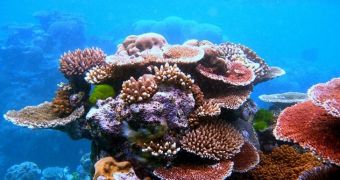Given how busy human society is destroying the environment in this day and age, it comes as good news that, at least every once in a while, efforts are also being made to restore damaged natural ecosystems.
Not to beat about the bush, news from Mexico says that what is bound to become the longest artificial reef thus far built is currently under construction in this part of the world, Inhabitat reports.
Information shared with the public says that the reef is being built in the waters off the coast of Quintana Roo and that, when completed, it will measure an impressive 1.9 kilometers (about 1.18 miles) in length.
Just to put things into perspective, it need be said that the Brooklyn Bridge is a little over 1.8 kilometers (1.11 miles) long. This makes the reef under construction in Mexico a tad bigger than this architectural landmark.
For those wondering why anyone would go through the trouble of building a massive artificial reef, here is the rationale behind this project: the reef is to house several thousand species, and also protect coastal communities.
Thus, specialists explain that, although the waters off the coast of Quintana Roo are already home to a pretty impressive coral reef, this natural ecosystem is now in decline as a result of environmental pollution and climate change.
This means that local shorelines stand to be left without protection against erosion, and quite a lot of aquatic creatures are to become homeless in the near future. The artificial reef hopes to tackle and solve both these issues.
Although not yet completed, the artificial reef already has a name, i.e. Kan-Kanán, which translates as the Guardian Serpent. The reef owes this moniker to the fact that, as shown by plans shared with the public, it will be serpentine-like in shape.
By the looks of it, as many as 100 environmentalists, engineers, architects, and divers are now working on this project. In order to build the reef, these folks will have to sink as many as 1,000 hollow pyramids to the ocean floor.
The pyramids are to rest on concrete and microsilica and will hopefully draw the attention of aquatic creatures that might want to turn them into their home and thus help create new natural ecosystems.
For the time being, it is unclear when work on this artificial reef in Mexico's waters will be completed. However, you can be sure that, when the last hollow pyramid is laid to rest at the bottom of the ocean, you will learn about it here.

 14 DAY TRIAL //
14 DAY TRIAL //